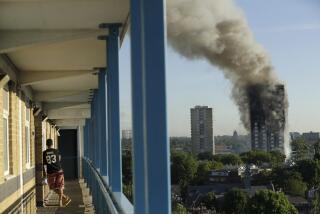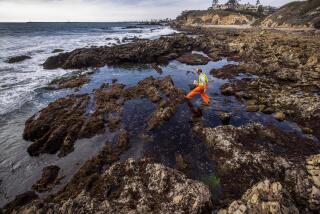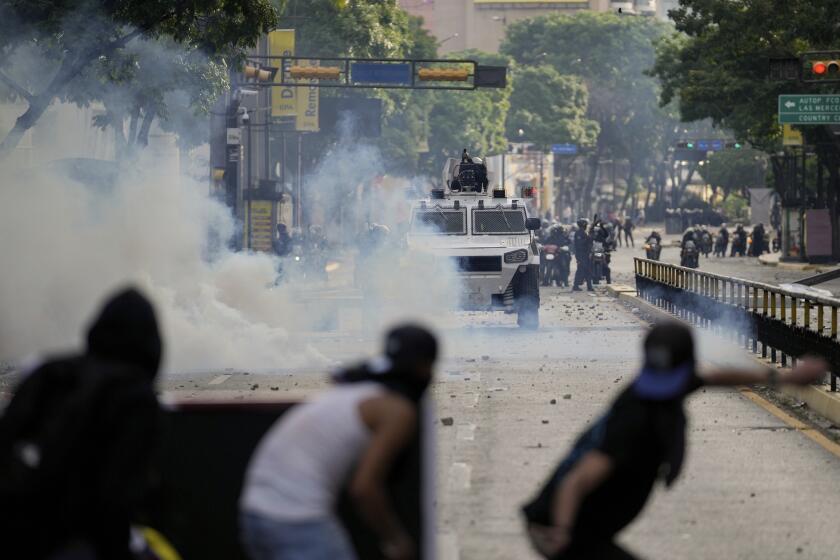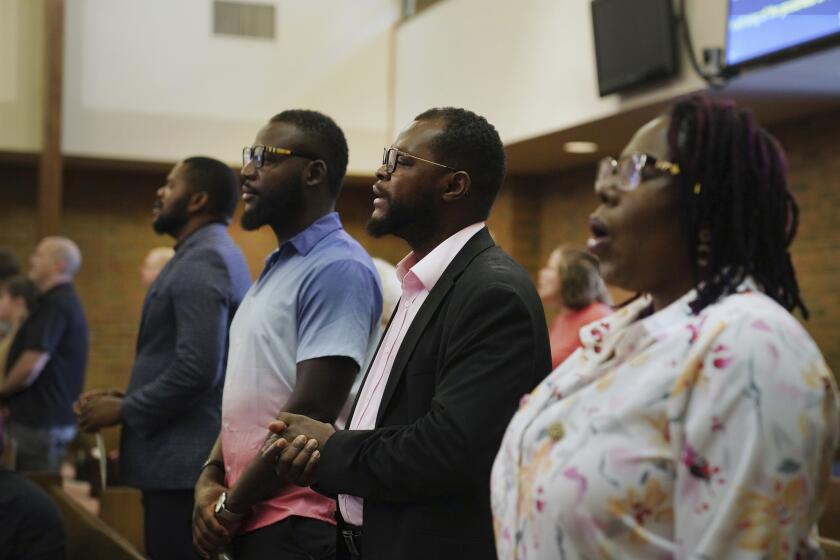Safety seemed to be an afterthought before the BP oil spill
Reporting from Washington —
The petroleum industry and federal regulators focused more on exploration and production than safety in the years leading up to the 2010 Gulf of Mexico oil spill, helping to set the stage for the worst offshore environmental disaster in U.S. history, according to a new independent report by the National Academy of Engineering and the National Research Council.
Conducted at the behest of Interior Secretary Ken Salazar, the report said the “multiple flawed decisions that led to a blowout” on the Deepwater Horizon rig resulted from “a deficient overall systems approach to safety” among the corporations that ran the drilling of the Macondo well, including BP, Transocean and Halliburton.
The report, titled “Macondo Well — Deepwater Horizon Blowout, Lessons for Improving Offshore Drilling Safety,” echoed many findings from previous studies of the disaster. But it added new levels of detail and put the nation’s top engineering peer group behind a call for redesigning a massive set of valves, rams and hydraulic devices once thought to be fail-safe: the blowout preventer that failed to stem the flow of more than 200 million gallons into the Gulf of Mexico.
“There were numerous warnings to both industry and regulators about potential failures of existing BOP [blowout preventer] systems” over the previous decade, according to the report, which demanded greater emphasis on safety than industry and regulators have shown, and questioned industry and regulatory norms that could erode safety.
The fragmented nature of offshore oil drilling, with different companies responsible for highly specialized tasks, means that few people on a rig may have a complete sense of the risks involved in the drilling operation, the report concluded.
The report committee’s chairman, former Navy Secretary Donald C. Winter, said that improvements in regulatory oversight and in industry response to offshore disasters gave him confidence that offshore drilling should continue. But he stressed that more work needed to be done.
“Our concern is whether this is a good first step in the right direction,” Winter said in a conference call, “or whether these changes represent a transient response in the aftermath of the Deepwater Horizon.”
The Interior Department said in a statement that it welcomed the report’s findings, which it said backed the regulatory policies it has pursued since the Deepwater Horizon explosion on April 20, 2010.
The department introduced more stringent environmental and safety regulations, and the industry responded by developing new oil spill response and containment systems, incorporating lessons from the gulf disaster.
But the report expressed concerns about how serious and sustained industry efforts might be, given that its research and development efforts over the last 20 years have been shrunk and outsourced. And most of those efforts have “been focused disproportionately on exploration, drilling, and production technologies as opposed to safety.”
Erik Milito of the American Petroleum Institute trade group defended the industry’s research focus. “The industry is leading the way in applying the best elements of the most successful existing safety programs, including the use of independent auditing and certification by third parties,” Milito said.
Complacency about safety, particularly in the case of blowout preventers, became apparent in testimony before the committee that showed “a misplaced confidence that blowout preventers could provide a guarantee, an insurance policy to the blowout,” Winter said.
The industry seems to have tempered its confidence in the reliability of blowout preventers, said Roger L. McCarthy, a private engineering consultant from Palo Alto and a member of the report committee. Still, there is no uniform standard for blowout preventers and no independent certification of their efficacy, McCarthy said.
“You can’t buy a circuit breaker for your home that hasn’t been independently certified by Underwriters Laboratories,” McCarthy said, “while a BOP is kind of a circuit breaker for an incredible amount of power that comes up the drill string, and it’s not certified to any standard.”
Deep offshore oil drilling is becoming more common, as evidenced by the $337 million in bids offered Wednesday in the Interior Department’s first auction of federal leases in the western Gulf of Mexico since the BP spill.
In such an environment, the industry needs to approach safety through a “proactive” system that articulates all the risks inherent to each particular process and puts in place steps to prevent them, the report recommended. Although that approach was adopted in the North Sea in the wake of disasters there a generation ago, not all companies use the approach beyond their North Sea operations.
More to Read
Sign up for Essential California
The most important California stories and recommendations in your inbox every morning.
You may occasionally receive promotional content from the Los Angeles Times.











